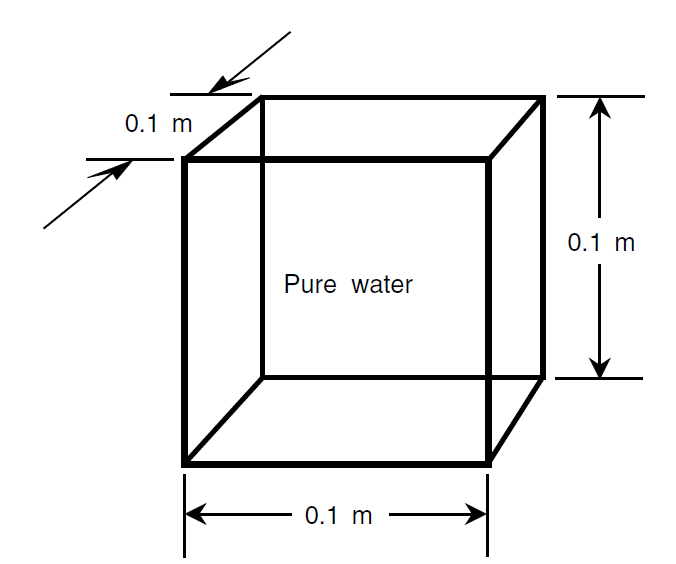


 الفيزياء الكلاسيكية
الفيزياء الكلاسيكية
 الكهربائية والمغناطيسية
الكهربائية والمغناطيسية
 علم البصريات
علم البصريات
 الفيزياء الحديثة
الفيزياء الحديثة
 النظرية النسبية
النظرية النسبية
 الفيزياء النووية
الفيزياء النووية
 فيزياء الحالة الصلبة
فيزياء الحالة الصلبة
 الليزر
الليزر
 علم الفلك
علم الفلك
 المجموعة الشمسية
المجموعة الشمسية
 الطاقة البديلة
الطاقة البديلة
 الفيزياء والعلوم الأخرى
الفيزياء والعلوم الأخرى
 مواضيع عامة في الفيزياء
مواضيع عامة في الفيزياءTHE KILOGRAM
The base SI unit of mass is the kilogram, symbolized by the lowercase nonitalicized pair of English letters kg. Originally, the kilogram was defined as the mass of 0.001 cubic meter (or 1 liter) of pure liquid water (Fig. 1).

Fig. 1. Originally, the kilogram was defined as the mass of 0.001 cubic meter of pure liquid water.
This is still an excellent definition, but these days scientists have come up with something more absolute. A kilogram is the mass of a sample of platinumiridium alloy that is kept under lock and key at the International Bureau of Weights and Measures.
It is important to realize that mass is not the same thing as weight. A mass of 1 kg maintains this same mass no matter where it is located. That standard platinum-iridium ingot would mass 1 kg on the Moon, on Mars, or in intergalactic space. Weight, in contrast, is a force exerted by gravitation or acceleration on a given mass. On the surface of the Earth, a 1-kg mass happens to weigh about 2.2 pounds. In interplanetary space, the same mass weighs 0 pounds; it is weightless.



|
|
|
|
مخاطر خفية لمكون شائع في مشروبات الطاقة والمكملات الغذائية
|
|
|
|
|
|
|
"آبل" تشغّل نظامها الجديد للذكاء الاصطناعي على أجهزتها
|
|
|
|
|
|
|
المجمع العلميّ يُواصل عقد جلسات تعليميّة في فنون الإقراء لطلبة العلوم الدينيّة في النجف الأشرف
|
|
|